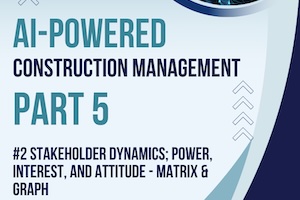This article follows my fascination with the recently released Claude-3.5. In it, I’ll discuss Claude’s “Projects” feature and one way I’ve used it to add efficiency to some of my safety-related tasks.
Projects are like Open AI’s “GPT” feature. These tools allow you to create agents primed to accomplish specific tasks. I previously wrote about GPTs in an article demonstrating how I made a Regulatory Robot – an agent preloaded with knowledge of local regulations that I could prompt with questions about compliance. Since that article, OpenAI’s GPT store has become inundated with innumerable GPTs promising to help users accomplish tasks like creative writing and job searching.
Many GPTs have millions of conversations, hinting at a growing interest in DIY AI agents that can be customized, used and shared. Features like GPTs and Projects are indeed the future, and the AI company that offers the most intuitive and meaningful means of interacting with AI will win the day.
Claude 3.5’s Projects may be a step in this direction. Claude’s more straightforward interface and minimalist features lend themselves to a more intuitive and helpful way of building AI agents. I’ve created several health and safety Projects to assist me with routine tasks and longer-term projects.
Example Project - Hazard Identification and Risk Assessment Guide
I’m working on a hazard identification and risk assessment guide for my jurisdiction's health and safety association. The guide will accompany an app to help employers identify hazards and assess their associated risks. We’ve built the basic framework for the guide, but we need to refine the content and ensure it aligns with our chosen standard and the requirements of our OHS regulatory body.
Setting up a Project
Creating a project is straightforward. Just hover over “Claude” in the top left of your screen and select “Projects.” Claude will take you to a library of your existing projects and show a button at the top right labeled "Create a Project." You can name your Project and describe what it is trying to achieve. For my Hazard Guide Reviewer Project, I wrote that I wanted to review and revise a hazard identification and risk assessment guide. You don’t need to describe your Project in detail here; you can add custom instructions later.
Project Knowledge
Claude allows you to add project knowledge up to its content window size, which currently has 200,000 tokens or roughly 150,000 words. Adding knowledge is like providing a large prompt for your chats; you don't have to worry about recopying the information whenever you interact with your Project. For my Project, I added the following PDFs to the project knowledge:
- CSA Z1002 12 Standard
- Hazard Identification and Risk Control (WorkSafeBC)
- Creating a Key Risk Inventory (WorkSafeBC)
These are multiple-page documents totaling approximately 30 MB of data and taking up just 9% of my project knowledge.
Below the Project Knowledge capacity bar is an option to add and edit my custom instructions. For this Project, I’ve instructed:
You are a knowledgeable health and safety expert. You are helping me review content for a guide that will walk users through identifying hazards in their workplace, assessing risk and implementing controls.
You use your project knowledge to review the content I show you. Based on your knowledge and expertise in hazard identification and risk assessment, you recommend changes to the guide.
When I provide a screenshot of a page of the hazard guide, you provide revised text recommendations. You may even recommend different images. You preserve the tone of the writing in the draft guide.
With this prompt, I’ve told Claude to respond as a knowledgeable health and safety expert and primed it to refer to its project knowledge. I’ve also informed it that I will provide screenshots of an existing document, and I want it to give the existing writing tone of the guide.
Results
I was impressed by the results Claude provided. Being able to provide screenshots meant I didn't have to individually copy text from each text box in the guide for my prompts. This ability sped up the process, giving me more time to review Claude's outputs for accuracy and appropriateness.
I also liked how Claude organized my chat history in an easily navigable list that allowed me to access, interact with, and delete past chats.
Finally, I’m beginning to prefer the way that Claude writes. It stays on task well and recalls instructions more reliably than other models.
Overall, Claude’s Projects feature provides a simple, intuitive, and helpful interface for interacting with the Claude LLM in a structured way. It’s great for repetitive tasks or one-off projects like the hazard guide described in this article.
 David Dunham, a Canadian Registered Safety Professional, has dedicated his career to construction safety management. As the president of Pragmatic Safety Services Ltd., he specializes in providing practical solutions to construction safety challenges and enjoys sharing his expertise through writing on safety, technology and construction topics. David is currently employed as a safety manager on a hydroelectric construction project in Northern British Columbia, Canada.
David Dunham, a Canadian Registered Safety Professional, has dedicated his career to construction safety management. As the president of Pragmatic Safety Services Ltd., he specializes in providing practical solutions to construction safety challenges and enjoys sharing his expertise through writing on safety, technology and construction topics. David is currently employed as a safety manager on a hydroelectric construction project in Northern British Columbia, Canada.